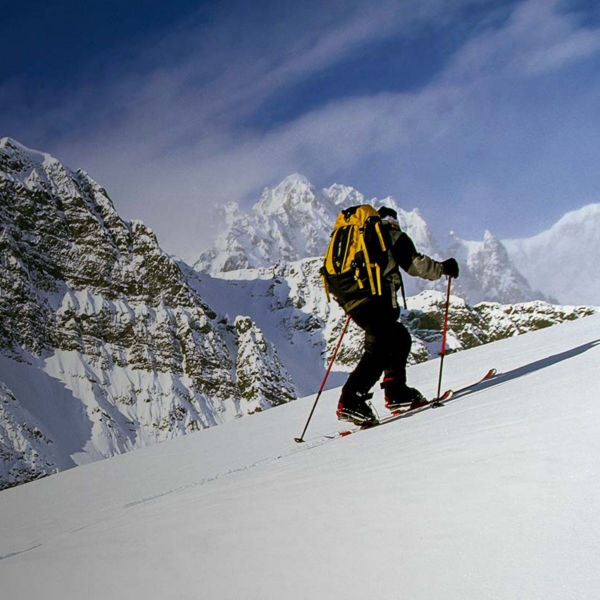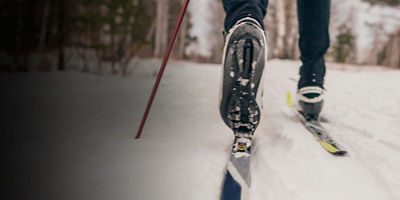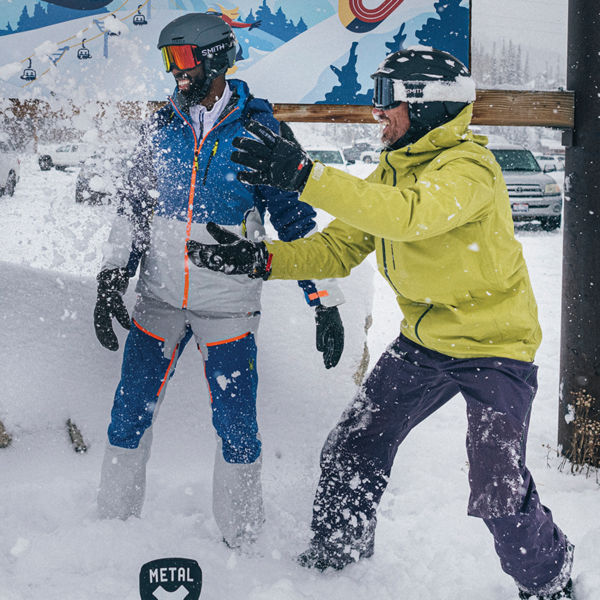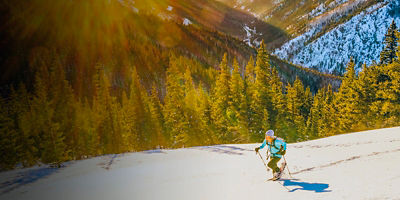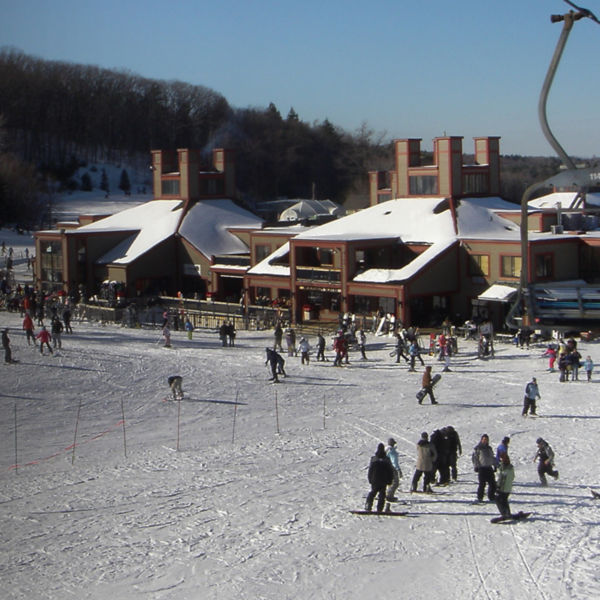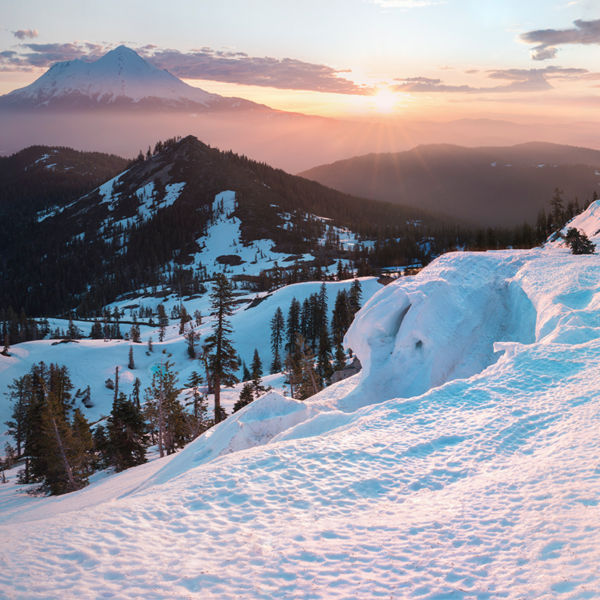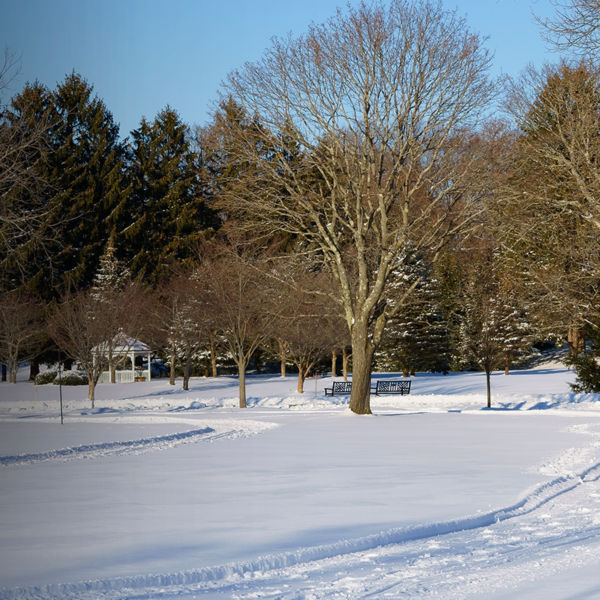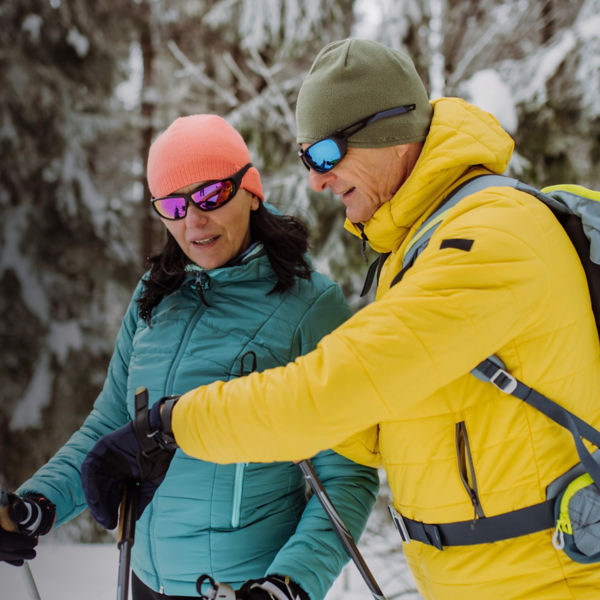
A ton of them. Enough that could easily overwhelm you—with choices between various materials and alpine (aka downhill) ski designs for every kind of terrain or snow condition. Honing in on your abilities and preferences is an excellent place to start. The good news: Buying skis is fun because skiing is fun, and anytime you’re thinking about skiing—well, that's fun too.
In this guide, you'll learn about:
- Types of Alpine Skis
- Materials and Design
- How To Choose the Right Pair
Types of Alpine Skis
All-Mountain Skis
These skis will capably handle the full variety of terrain across the entire mountain, as the name implies. This highly versatile option is for the skier who wants a single top-to-bottom setup, for powder to hardpack and everything in between. All-mountain skis are designed with various rocker profiles and most have a "mid-fat" waist width.
Powder Skis
If you are lucky enough to score deep snow, you'll be glad to have this ski specialized for the conditions with added width and plenty of rocker. Powder skis have a wide waist and a range of rocker profile options from full rocker to tip and tail rocker.
Big Mountain Skis
For charging steep and technical lines, big mountain skis fall somewhere between all-mountain and powder skis. They tend to have a stiffer core for handling mixed conditions and speed.
Freestyle Skis
Designed for terrain parks—and the skiers who want to take their park skills to the mountain—freestyle skis are often multi-directional twin tips and typically have a narrower waist, plenty of camber, and a unique flex pattern for jibbing features and “buttering” takeoffs.
Carving Skis
With a narrow waist and big sidecut radius, carving skis make initiating turns easier from edge to edge. They are perfect for skiers who love fresh groomers or beginner and intermediate skiers learning to make turns.
Women’s Skis
Women’s ski designs have come a long way over the years, with more options today than ever before. These skis are designed for a smaller, lighter skier, with smaller feet and hips. Women’s skis are typically softer and more forgiving in the flex. But female skiers who want a stiffer flex will have fewer women’s specific options, and many will opt for a smaller pair of “men’s skis.”
Materials and Design
Core
The core of a ski is like its personality—it's the center that everything else revolves around. The materials used will determine the strength and flexibility of the ski. Avoid cheap plastic skis, and look for a wooden core. Ash and maple are commonly used for their durability, while poplar and aspen are lighter and more playful.
But the core of the ski is not just wood. Most skis integrate a composite of other materials and layers that ultimately determine the ski’s performance, including:
- Fiberglass: one of the most popular composite materials. It is strong and lightweight, and inexpensive. The material is highly responsive, making skis turn easily.
- Titanium: the most robust core material and good for variable terrain. It's more expensive than fiberglass or a solid wood core.
- Carbon fiber: the most lightweight and highest performing core material. It is rigid, dampens vibrations but also flexes well enough for turning. It is also the most expensive core material.
Base
There are two types of ski base materials, and both use polyethylene plastic, commonly known as P-Tex.
- Sintered base: ground, heated, and cut into the base shape. A sintered base is the premium option because it is a faster, more durable base material.
- Extruded base: melted into a mold, then cut and shaped into the ski base. The extruded base is a less durable and slower material, and is less expensive than a sintered base.







